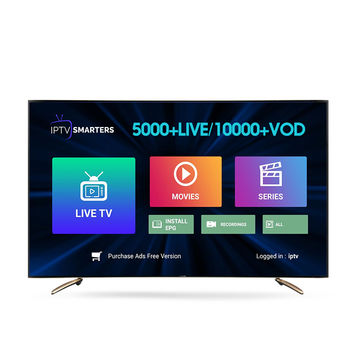Unleash the Power of IPTV: Costs IPTV Subscription Services Available Currently
Unleash the Power of IPTV: Costs IPTV Subscription Services Available Currently
Blog Article
Exactly How IPTV Functions: A Step-by-Step Overview to Internet Method Television Technology
Net Method Tv (IPTV) has transformed the way we consume tv material, using a new realm of possibilities through the power of the net. Understanding the ins and outs of how IPTV functions can shed light on the modern technology that drives this innovative kind of media shipment. From the essential concepts of IPTV to the complex process of web content distribution, each step plays a vital duty in making certain a smooth viewing experience. In this guide, we will certainly reveal the underlying devices that make IPTV a remarkable blend of innovation and entertainment.
IPTV Essentials
In understanding IPTV fundamentals, it is pivotal to comprehend the fundamental operations of this innovation in delivering television web content over the internet. IPTV, which stands for Internet Procedure Television, makes use of Internet Method (IP) networks to send tv web content to customers' tools. Unlike standard methods of transmitting television content with cord or satellite signals, IPTV streams media with high-speed net connections.

Additionally, IPTV permits interactive capabilities, such as video clip as needed (VOD) and digital program overviews (EPG), enhancing the customer experience by offering even more control and versatility in accessing web content. In general, understanding the fundamentals of IPTV sets the structure for discovering its advanced capabilities and the advantages it offers to contemporary television intake.
Content Shipment Process
Efficient content delivery in IPTV systems includes a well-structured procedure that makes sure smooth transmission of tv web content over IP networks. The content shipment process in IPTV begins with the creation of the video material, which is then encoded into electronic style appropriate for IP transmission. This encoded content is then firmly saved on servers called media servers. When a viewer requests specific material, the IPTV system gets the asked for data from the media web servers and provides it to the viewer's tool online.

Middleware Functionality
With the assimilation of middleware, IPTV systems gain boosted performance that enhances individual interaction and check out here content monitoring. Middleware serves as an essential element that bridges the space between the interface and the back-end framework, facilitating seamless communication and communication within the IPTV system. One of the vital features of middleware in IPTV is to make it possible for tailored user experiences by giving attributes such as interactive program guides, video-on-demand This Site services, interactive marketing, and user preferences administration. By streamlining these capabilities through middleware, provider can offer an extra vibrant and customized IPTV experience to their clients.

Gadget Compatibility
Given the pivotal function of middleware in enabling smooth interaction and material management in IPTV systems, an important element to take into consideration is the compatibility of tools utilized for accessing the IPTV services. Device compatibility is vital for guaranteeing a smooth customer experience and optimal performance when accessing IPTV material.
In the context of IPTV, tool compatibility refers to the capacity of a gadget to successfully interact with the IPTV solution, present material appropriately, and support the essential protocols and codecs for streaming video web content over the internet. Different tools, such as wise TVs, set-top boxes, smart devices, tablet computers, and computers, may have differing levels of compatibility with IPTV solutions.
To make sure a smooth watching experience, it is very important for customers to pick tools that are suitable with the specific IPTV solution more tips here they are making use of. Additionally, IPTV company should use assistance for a wide variety of gadgets to accommodate the diverse demands of their user base. By focusing on device compatibility, both users and company can enhance the general IPTV experience.
Top Quality of Service (QoS)
Taking into consideration the important role of keeping a high standard of efficiency and integrity in IPTV systems, making certain constant High quality of Solution (QoS) continues to be a fundamental facet of the individual experience. QoS in IPTV refers to the ability of the system to deliver material with very little disturbances, high resolution, and quick loading times.
Solution companies use QoS devices such as web traffic prioritization, buffering, and mistake adjustment to maintain a stable IPTV service. By focusing on IPTV web traffic over much less time-sensitive information, carriers can make certain smooth playback even throughout optimal usage hours. Buffering helps make up for network changes, while mistake modification methods boost information honesty.
Continuous surveillance and optimization of QoS specifications are vital to adapt to changing network conditions and individual demands. Inevitably, a robust QoS structure is essential for delivering a seamless and enjoyable IPTV experience to users.
Verdict
Finally, IPTV operates through the transmission of tv material over net method networks. The innovation involves an organized process of material delivery, helped with by middleware functionality to make certain compatibility throughout various gadgets. Quality of Service plays a vital role in keeping the effectiveness and reliability of IPTV solutions. Understanding the essential concepts of IPTV is crucial for realizing the ins and outs of this ingenious television innovation.
Report this page